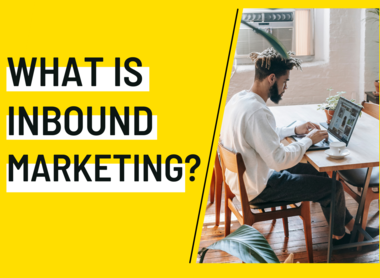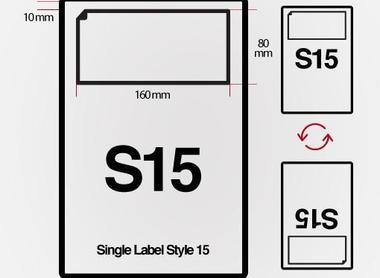91+ Video Marketing Statistics You Need To Use To Your Advantage
Video marketing offers huge opportunities for businesses, and has done for quite some time. Product placements in shows and films started as early as the 1920s, even before the enormous numbers of TV adverts started to hit our screens, and with the widening access to the internet, video marketing really took off. Today, video marketing is a must for many businesses, with YouTube videos and social media posts, as well as live video streams being used on a regular basis. In this post, we’ll take a look at what video marketing is, and where it came from, before getting into the details. We’ve found some of the most impressive video marketing statistics for this post, so let’s jump right in.

What Is Video Marketing?
Video marketing is pretty much exactly what it sounds like – using video content to increase interest from customers, and to develop rapport with them on digital and social media channels, helping to increase brand, and product awareness.
As an inbound marketing strategy, there are many formats that can be highly effective, providing more value for customers – from vlogs to video interviews, tutorials, product demos and reviews. Video can be used for outbound marketing too, and where it is embedded in emails or on landing pages, it can be extremely effective, as we’ll see.
The History Of Video Marketing
While video recordings have been possible since the 1880s – the oldest known surviving video is just 2.11 seconds, and was recorded by Louis Le Prince in Leeds, in 1888 – video marketing didn’t start to take off until much later. As cinema became a popular pastime in the 1930s, product placement became a popular choice for businesses to help increase product awareness.
The first TV advert wasn’t aired until 1941, when watch manufacturer Bulova paid just $9 for their ten second clip to be seen by just a few thousand viewers in New York. Given that just 4,000 TVs had been sold, the potential return on investment was low. With a short tagline of “America runs on Bulova time”, you can see the ad here.
In the UK, TV advertising didn’t start until 1955, when ITV launched as a commercial alternative to the BBC, and the first commercial was for Gibbs SR toothpaste. You can see the 60 second clip here.
Throughout the 1960s and 1970s, TV adverts became critical for the success of businesses, and in many cases, resulted in brands becoming the household names they are today. Adverts, with their jingles and taglines were quoted everywhere, with memorable ads including the Smash Martians, Hamlet cigars and Bisto. TV advertising remains popular still today, even as more video marketing is carried out online than on TV. Think about how people still look for adverts at certain times of the year. Many of us don’t feel it is truly Christmas until we’ve seen the Coca Cola ‘Holidays Are Coming’ ad, and the John Lewis Christmas ad is the subject of much discussion.
Due to the untracked nature of the internet, it is unknown exactly where the first video ad was seen, or how successful it was – but what we do know is that video adverts really started to take off in the mid-2000s (around the time that YouTube launched). After this, there was an explosion of marketing experiments, and video marketing evolved into the impressive proposition it is today.
Is Video Marketing Valuable?
There are precious few people that will have managed to avoid video marketing somewhere – whether they’ve seen it online or offline. Online video advertising is incredibly valuable, doesn’t need to be expensive to create, and most importantly, it provides huge return on investment. Let’s start with some big hitting statistics to get us excited:
- Video is viewed for five times longer than static images or text
- 93% of marketing professionals say that video is an essential part of their marketing strategies
- 86% of businesses use video for marketing to their customers
- 89% of businesses say that video provides an excellent return on investment
- 91% of marketers say they think video is even more important for brands to invest in since the COVID-19 pandemic
These statistics clearly show that video marketing is incredibly valuable – and here’s a way to quantify just how valuable video marketing can be:
We are all aware of the phrase ‘a picture speaks a thousand words’, and that got us to thinking – if video is a series of pictures, how many words might video be worth? Well, research by Dr James McQuivey found that video could be worth a minimum of 1.8 million words per minute – with the rationale that, if one picture is a thousand words, and video is filmed at 30 frames per second, then a single second of video is word 30,000 words. 30,000 words x 60 seconds = 1.8 million words per minute. While some video is shot at 24 frames per second, that still adds up to a massive 1.4 million words per minute – so however you look at it, video is definitely worth investing in.

How Does Video Marketing Create Success?
Many people (around 69%) prefer to watch a short video than to read about something – particularly when learning about products or services – since it is fast and convenient, and the information is easier to understand. But that isn’t the only reason that video marketing results in success for businesses.
It increases conversion rates
First up, here’s a point that we all need to know about – embedding video on your landing pages has been shown to increase conversion rates by a massive 86%. That’s because video on a page draws the attention – the average time spent on pages that contain video is 7 minutes and 21 seconds – as opposed to just 2 minutes and 48 seconds on pages without. And the longer a site visitor stays on the page, the more likely they will remain interested, continue to browse the website, and to ultimately become a paying customer. Not only that, keeping site visitors on the page is a factor in keeping you at the top of the search engine results pages too, which increases your exposure, and builds trust.
It is humanising
When you’re creating videos that feature your team, customers begin to relate to your brand in a different way. You only have to consider the increase of YouTubers to see this – people like to see people, and around 10% of people say that they watch videos online to feel connected with people!
For businesses, that means that you shouldn’t restrict the people featured in your videos to just your marketing team – your whole team can be involved, from the CEO to the apprentices and the cleaning staff. So, if a particular team member has a message that your target customers are likely to relate to, you can expect that video to be a success. Remember, video doesn’t have to be hours long – 90% of consumers say that video content will help them make a purchase decision, and with the right approach, just a few seconds of video on your social media can contribute to greater interest in your brand.
It makes information more accessible
Long articles are great, and there will always be a time and a place for them (we’ll get to that in a bit!). But when the details get confusing, or there is the chance of misinterpretation, a short video can provide more details and help to eliminate those issues. 96% of people have seen an explainer video when they have been looking to find out more about a product or a service, and 85% of teens now believe they can do anything if there is a YouTube how-to on it – which is an incredible number.
It is sharable
When you’re investing in marketing, the ultimate goal is to raise profits by increasing brand awareness. Increasing brand awareness is made easier when content is shared – and that is easier than ever. Social video is shared more than 1200% times than both text and image content combined. That’s a massive uplift in the number of people that will see your video, and a massive increase in the number of potential customers too.
It makes content more memorable
Watching video is much more memorable for most people than other types of content. That’s because viewers aren’t just using their eyes – in most cases (we’ll talk about exceptions when we get to talking about Facebook video) they’re using their ears as well. Those jingles we talked about when we referred to TV advertising? We’re willing to bet you can recall many of those ads – and yet, you’ll be able to recall far fewer print adverts from the same time. Research shows that video viewers retain up to 95% of a message in a video, as opposed to just 10% of text.
It is more inclusive for customers too; 65% of people say that they are visual learners, while around 7.1 million adults in England alone have very poor literacy skills. By using voice search and video content, they can access the information they need, and are more likely to remember brands that create great content. Adding captions is simple too, and can assist the 1 in 6 of the UK adult population that have hearing loss.
Now, we’re certainly not suggesting that you should give up other types of marketing to solely focus on video, but there is definitely a huge amount of value to be gained. Many customers – around 54% - want their favourite brands to make more video – but although the demand is there, some businesses shy away from it owing to costs.
What Does Video Marketing Cost?
This really is for the business to decide. Depending on the type of video marketing being created, then it could cost as little as the time taken on a smartphone (such as for TikTok videos, or Story videos) through to more than £50,000 for a professionally shot and produced advert. Then, depending on the platform that the video is being promoted, there may be costs to cover advert targeting.
The most expensive video advert ever made was for Chanel, advertising No. 5 perfume, and was entitled ‘The Film’, featuring Nicole Kidman. The three minute ad, directed by Baz Luhrmann was shot in 2004, and cost a whopping $33 million – more than twice as much as the second most expensive ad! ‘The Film’ premiered in cinemas before Bridget Jones: The Edge of Reason, and the commercial cost almost as much as the movie it preceded, which cost $40 million to produce.
While budgets really can be as high as businesses are prepared to pay, it is possible to create fantastic video content with very little cost as well. With a decent smartphone, and a free video editing app, and a bit of time, small businesses can create really valuable video content for their customers with hardly any budget. Not only that, by posting on YouTube and social media, with the right combination of keywords and hashtags, it is possible to reach customers with minimal ad budget too.

What Platforms Can Be Used For Video Marketing?
As we’ve already established, video marketing holds massive potential for marketers, and there are plenty of opportunities to reach customers with video if you use the right channels. Let’s take a look at some of the biggest and the best platforms to use for video marketing.
TV Advertising
We’ll talk about the oldest and most established type of video advertising first. TV advertising continues to be seen by more than 70% of the population of Europe, and it is widely trusted too. In the UK, 42% of the population stated that they would trust TV advertising, in contrast with just 6% of YouTube ads and 5% of social media ads.
With production costs for a TV ad starting at around £25,000 and increasing to as much as a brand is willing to pay, making an advert for TV isn’t cheap. Then you’ve got to consider the cost of buying the slots – which is between £50 to £4,000 per slot, depending on the time of day and the channel.
TV ads are estimated to deliver returns of £1.79 for every £1 invested, but they’re not without significant challenge. Production costs aside, you can’t guarantee that your video will be seen by the right type of customer – especially as streaming services become more popular and people drift away from watching live TV.
While TV advertising is still relevant for some businesses in the 2020s, it is our opinion that it is on the decline, and will continue to decline in relevance as viewers move towards on demand and streaming services. There is far more return on investment to be found from video marketing online.
YouTube
There is no way we can talk about video marketing without mentioning YouTube! YouTube launched in 2005 and the first video was uploaded on 23rd April, featuring site co-founder Jawed Karim, and entitled ‘Me at the zoo’. It isn’t the most exciting clip, just 18 seconds of Jawed in front of the elephant enclosure, but the historical significance of the clip means that it has now been viewed more than 166 million times.
As a free to upload and free to view video platform, YouTube changed everything, allowing anyone to upload any type of video (within the community guidelines, of course) and allowed millions of people to have a go at creating their own videos. Not only that, but it also allowed businesses to get involved – and for people to educate themselves on how to do absolutely anything.
When it comes to website hits, only Google outperforms YouTube – and when Google bought YouTube in 2006, they hit the jackpot. More than two billion people log into YouTube each month, and daily over a billion hours of video are watched, while more than 500 hours of video gets uploaded every minute of every day, meaning there is always something new to watch.
Why do marketers love YouTube, you might ask? Well, aside from being able to upload all kinds of content that your customers will find useful:
- It is great for brand awareness, because YouTube videos are shown on Google search results
- YouTube content (that abides by the community guidelines) never disappears, so may be returned when viewers search for keywords or hashtags that are used in the video description
- Videos on YouTube can be used to cross-promote, encouraging customers to follow the business on social media channels, and to click through to the company website
- Adverts are easy to place, with four different types of YouTube ads available to marketers: skippable in-stream ads, non-skippable in-stream ads (including bumper ads), video discovery ads (formerly known as in-display ads) and non-video ads (i.e., overlays and banners)
- With the right strategy, YouTube content can be monetised and provide additional income for the business
Vimeo
When searching for alternatives to YouTube, Vimeo is often found close to the top of the list. Although Vimeo’s user base is far smaller than YouTube (the Vimeo community is a little over 200 million users, with just 1.6 million subscribers having a paid plan), it wasn’t ever designed to be a competitor. Rather, it is a niche platform that allows for viewers to find the type of high quality content that they are prepared to pay for. Considering that there are over 715 million monthly views of videos on Vimeo, those viewers definitely use it.
For video marketing, Vimeo offers business packages costing from just £40 per month, and include up to a massive 5 terabytes of storage, video embedding and clickable calls to action. In addition, there are options that allow for publishing videos as native on social media, and the ability to track advanced analytics. While it might not be the first choice for businesses, it is definitely worth considering.
Social video
‘Social video’ has been a hot topic for a while, although in the longer term we doubt this name will endure – we think social video will simply become video, with social media being just another channel to publish on. However, social video is a slightly different category to other video, with different characteristics to say, a YouTube ‘how to…’ clip. Key characteristics of social videos include:
- They are short – usually between 30 seconds and one minute
- They are super targeted to the audience that you want to reach
- They are designed for the social media platform
- The desired outcome is engagement
Essentially, social video, is simply a super-short video that is made specifically for social media, with the sole purpose of increasing engaging with followers. Let’s take a look at some of the stats to know about video on different social media channels.
Facebook Video
There are very few businesses that don’t use Facebook for their marketing – and with 2.85 billion monthly active users, it is a logical first step into social media marketing. Facebook was an early adopter of video, adding video in 2007, just three years after launching. Today, more than 4 billion video views take place on Facebook every day, with 500 million viewers seeing around 100 million hours of content every single day.
The majority of Facebook video viewers (85%) watch with the sound off, and most of those (80%) say they strongly dislike videos playing loudly in their feed. That’s really important for marketers to know, because 71% of Facebook users believe that ads on the platform are relevant to them – so it is well worth posting those video ads, but make them silent.
You have to be quick to engage customers on Facebook though – around 47% of value from Facebook video ads are created within three seconds. Given that the average video watch time on Facebook is a mere 10 seconds, when creating video for Facebook, you need to make an impression immediately.
A really important point to note though – if you’re posting video on Facebook, don’t take the easy route and simply share from YouTube. Videos that are uploaded to Facebook directly see a massive increase in shares compared to those that are shared from other platforms – an increase of around 478%! For that kind of increase, it is well worth taking a few moments to upload directly.
Since 2016, Facebook Live has also become a successful platform for marketers to reach, and engage with customers too. In the past year, Facebook Live video view count climbed to 2 billion viewers, with an estimated 64 billion views of Live videos each day. Considering that Facebook Live videos are 20% more likely to be shared, liked, or engaged with, there’s little wonder that 78% of marketers use Facebook Live as part of their strategy.

Instagram Video
Originally launched as a photo sharing platform, Instagram added video functionality in 2013, and today more than 69% of time that users spend on Instagram is spent watching videos. Instagram videos get high viewing figures too –videos in feed get more than 90% watch rates, with 83% of Stories being watched. IGTV posts are less popular, with just 44% being watched by viewers. In contrast to Facebook video, Instagram video viewers tend to watch with sound – more than 60% of Story posts are watched with sound turned up.
Video on Instagram doesn’t just result in views, either. 20% of Instagram Story posts results in a viewer sending a direct message to the original poster, and 31% of people watching video ads on Instagram have gone on to make a purchase directly after seeing it. With over a billion visits to Instagram every single day, these statistics show that using video for marketing to customers on Instagram just makes sense.
Twitter Video
Despite the fact that Twitter is primarily a text-based platform, there are more than 2 billion video views on Twitter each day, and this number is increasing by just over two thirds each year. When the aim of the game is to increase engagement, using video on Twitter just makes sense. Videos posted in tweets are 60% more likely to be retweeted than still images, and tweets with video get around 10 times the engagement than tweets that don’t. And considering watch time on Twitter is increasing by around 72% year on year, it makes sense to use video on Twitter, if you’re using Twitter as part of your social media strategy.
Videos on Twitter tends to be viewed on mobile devices – with 90% being seen this way. That makes sense, since the majority of tweets are sent this way, and video grabs attention on almost every web page. Marketing professionals have three options to help promote video posts on Twitter, with Video Website Cards to help drive traffic to your website and provide twice the click-through rate, Promoted Videos and In-Stream Video Ads.
TikTok Video
Initially launched as Musical.ly in 2014, the TikTok app has now been downloaded more than 6 billion times worldwide, with over 1 billion videos being viewed each day by 689 million TikTok users internationally. It is available in 150 markets, and in 75 languages. Outside of China (where the app is known, and operates as Douyin), India has the greatest number of users, with more than 190.6 million of the 1.3 billion people living there having downloaded the app. TikTok users tend to be young, with around 50% of users globally being under 34.
TikTok advertising is expected to generate $27 billion in ad revenue by the end of 2021. 43% of users say that they think advertising on the app blends in with native content, and 52% say they discover new products on TikTok, so if your target customer fall in this demographic then TikTok presents an opportunity you can’t ignore.
TikTok owners ByteDance are well aware of the value of advertising, and have already added in-feed ads, top view ads, branded effects and lenses, as well as brand takeovers, branded hashtag challenges and more. Pair that with their upcoming functionality that they expect to facilitate more than $185 billion of ecommerce sales in 2022, and it becomes clear how TikTok video can really provide a massive amount of potential for businesses.
Despite being relatively late to the video party – LinkedIn video was only rolled out in 2017 – today video is one of the best performing types of content on the platform, generating more than 300 million impressions in a year. If your target customers are other businesses, then posting video on LinkedIn will certainly increase the return on the time you invest on the platform. You’re more likely to see engagement too: LinkedIn users are 20 times more likely to share a video then any other type of post.
LinkedIn video ads can be utilised at any stage of the sales cycle, and if you enable targeting on the LinkedIn Audience Network, you’ll reach up to 20% more of your target audience.
Live videos were finally added to LinkedIn in 2019, and they immediately became a resounding success for brands and individuals alike. They see high levels of engagement – you can expect 7 times more reactions, and up to 24 times more comments compared with standard video posts. While creating a live video might feel risky, and like they take more effort, for the uplift in engagement, it is almost certainly worth it.
You need to choose your video content for LinkedIn carefully though. We regularly see LinkedIn users getting backlash when posting less business-focused posts, with variations on the comment ‘this isn’t Facebook’. Spend time on your LinkedIn videos, keep them short and direct, and be sure that they are relevant to your target customer.

Where else can I use video marketing?
Other social media platforms offer great returns too, if your target customers are likely to be on them. Snapchat sees over 218 million users on the app every day, and video ads can be really targeted on the platform. Pinterest is another great option, and approximately one billion videos a day are watched on Pinterest – and there are some great packages to help increase the reach of video campaigns.
Your website is a logical place to start – and you can do that by uploading it directly, or to embed from your YouTube channel. It has been shown that website visitors spend up to 88% longer on pages that have video playing, and since the length of time website visitors spend on a page is important for SEO, it is well worth doing.
You might not think video could be a winner for email marketing, but it really can be. Including the word video in the subject line of an email increased the chances of recipients opening it by 19%, and if you embed video in an email, click-through rates increase – by a massive 300%. Combine that with video embedded on landing pages, and you can expect conversion rates to increase by around 80%, providing even more value from the investment you made in creating the video in the first place.
Should I Purely Focus On Video Marketing?
Absolutely not. While video marketing is definitely going to be an important element in your marketing strategy, you shouldn’t abandon other forms of content, for these reasons:
- Not every customer will want to consume video that you create
- Blog posts and other types of inbound marketing [link] contribute to SEO
- Other types of social media content are important for the reputation of your business
If you put all your effort into video marketing and don’t back it up with your other marketing activity, it is likely that you’ll see a drop-off pretty quickly.
The Future Of Video Marketing
Although we’d love to have one, we don’t have a crystal ball to tell you what is coming next in video marketing. We can tell you about trends that we expect to continue, which include:
- Online video is expected to make up more than 82% of all consumer internet traffic by the end of 2022
- Short-form videos will continue to offer the greatest success
- Interactive videos will become more popular, since they can help marketers to understand their consumers better
- 360° videos that allow for significantly more detail to be shared, and for viewers to interact with are coming – Facebook is testing them currently
- Artificial intelligence will help to increase video personalisation
- Drone video footage will be more in demand than ever
These trends are useful to know, and while they might seem a long way off at the moment, we doubt that they will take long to come around, so it is important to stay ahead of the game by investing in your video marketing now.

Our Final Thoughts
If you’re not convinced of the value of video in your marketing after all these statistics, then we don’t think you ever will be! There are just so many great ways to use video content in your marketing, from YouTube videos to social video, through to using video on your website and in your email marketing. Considering that video marketing doesn’t cost as much as it once did either – you can start creating great video content for your business with your smartphone and free apps – there really is no reason to not get involved and benefit from video marketing right away.
Last Updated on June 4, 2021




































